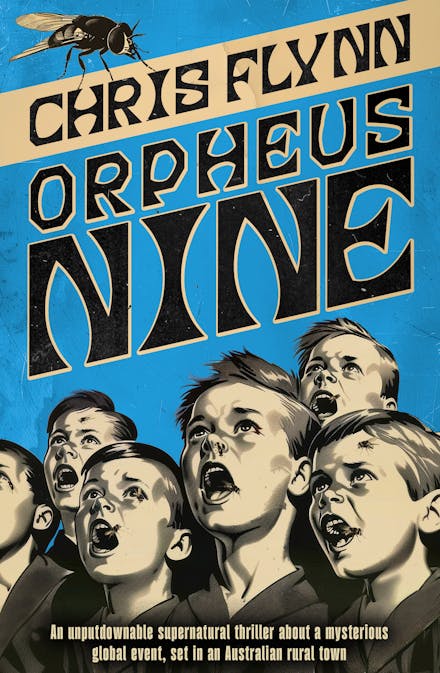Jump, Baby!
Omnibus Books, $14.95 pb, 32 pp
Flying to maturity
Pigs don’t fly, but dragons and kites do, and possums can jump, which is perhaps just as scary if you’re a little one. These four picture books deal with flight, their authors and illustrators using more or less imaginary elements in the process.
Jump, Baby! is almost completely realistic. The animals – three ring-tailed possums and an owl – are anthropomorphised only insofar as they can talk, but their behaviour is entirely natural. Well, perhaps not quite. Presumably, baby possums know how to jump naturally, and are not paralysed with fear as this baby is. This book is about learning and about growing up. ‘Baby doesn’t feel very big at all,’ even when Mumma tells him he is now too big for her back, and Big Sister assures him he’s too big for the owl to eat. He still feels small enough for both things to happen, and so jumps to join his mother and sister in the peach tree. ‘I jumped all by myself!’ he tells Mumma, who responds, ‘I knew you would’. He has grown up.
Baby Bear Goes to the Park moves into the familiar fantasy world of bears flying: ‘How sweet to be a Cloud / Floating in the Blue,’ sings Pooh, holding onto his balloon. In this case, it is Baby Bear with a kite. Familiar from other books in the series, Baby Bear is visiting the park with Papa and learning kite flying. ‘Suddenly a gust of wind tugged at the kite,’ and Baby Bear takes off. Pooh Bear was brought down by Christopher Robin’s popgun. Baby Bear has a different experience, and an original one. The caterpillar, who had helped him untangle his kite on his first park excursion, returns as a butterfly, and comes to his aid again. In this story, it is the caterpillar who has grown up – into a butterfly – and responsibly gathers all her friends to help. As usual, the parent is completely unaware.
In The Dragon Machine, the dragons themselves do surprisingly little flying. The first tail we spot with George is clearly in the sky, but from then on we see none of the multifarious dragons actually airborne, only the mechanical dragon George builds for himself, to lead his pet dragons to the ‘great wilderness unnoticed and overlooked and safe’ where dragons belong. And the little dragons follow. George also has a wind-up toy dragon, which is his companion until he acquires the ‘real’ ones. A solitary child – ‘unseen, ignored and overlooked’ – George clearly needs the dragons as friends, even though they are a bit of a nuisance. In the end, when his family find him, they give him a cake and a puppy to celebrate his return. They are certainly noticing him now, but, nevertheless, he still sees his new pet as a dragon.
Continue reading for only $10 per month. Subscribe and gain full access to Australian Book Review. Already a subscriber? Sign in. If you need assistance, feel free to contact us.















Leave a comment
If you are an ABR subscriber, you will need to sign in to post a comment.
If you have forgotten your sign in details, or if you receive an error message when trying to submit your comment, please email your comment (and the name of the article to which it relates) to ABR Comments. We will review your comment and, subject to approval, we will post it under your name.
Please note that all comments must be approved by ABR and comply with our Terms & Conditions.